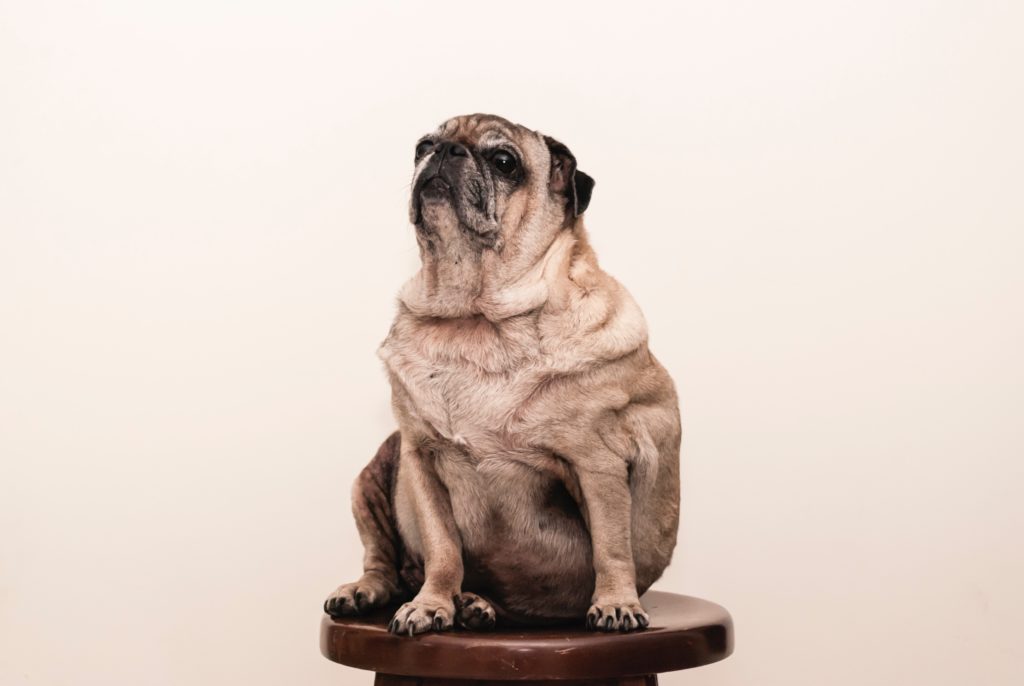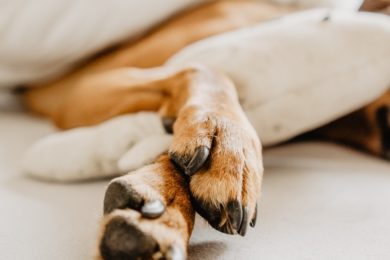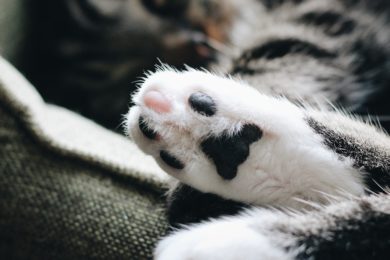
Many of us fight the battle of the bulge, trying to lose those last 5, 10 pounds, or more. We don’t exercise enough. We may indulge in the occasional treat – on a lot of occasions. We know that obesity is an epidemic in our country but many of us aren’t aware that our pets are victims too. Pet obesity is a growing (no pun intended) issue and one that can severely impact the health of our furry friends. We want these guys around for as long as possible, so what do we need to know to get them healthy?
What’s Another Treat – or Two?
More than half of the pets in Canada are overweight or obese. What’s going on?
Treats are an incredibly important part of training, and our pets do need the nutrients of regular meals. But – and this is a big but – many owners overdo it. Just 18% of pet moms and pops feed the recommended amounts. Most of us err on the side of more rather than less. And, while that adds up to a lot of extra calories, we don’t necessarily make up for it with increased levels of exercise.
Excess weight can cause a host of health issues, just as it does in humans. These include:
- Diabetes.
- Heart disease.
- Joint pain.
- High blood pressure.
- Kidney disease.
- Cancer.
- Digestive problems.
How do you know if your pet is overweight or obese? Pets that are a healthy weight have an “hourglass shape when viewed from above.” They’re widest in the middle of their bodies, narrowing towards the waist, and then widening a bit at the hips. Feel for your pets’ ribs. If you can’t feel them easily, they may be overweight.
If you suspect your pet is overweight or obese, see your vet. It is important to rule out thyroid or joint problems that could be causing the problem. If not, though, it’s time for a healthy change!
Doggie Diets? Cat Calorie Crunching? Just Focus On Health!
Drastic weight loss is just as dangerous for pets as it is for humans. Slow and steady wins this race.
- Look at your pet food packaging for appropriate portion sizes. For instance, a 50-pound dog needs about 700-900 calories. If you feed twice a day, divide his calories into appropriate portions, saving a bit of room for a few treats throughout the day. Treats should account for no more than 10% of your dog’s food – and if you give 10% treats, deduct 10% of his food.
- Don’t “eyeball” his food. Use a measuring cup to avoid over- or under-feeding.
- Don’t “free feed.” This is when you leave food out for your pet all day. When mealtime is over, put the food away.
- Try putting your cat’s food in different dishes around your home. He’ll have to hunt for them – more exercise!
- Play, walk, move. If you have a cat, play! Encourage movement, place scratching posts throughout your house, and invest in a ball of yarn or toys for games of cat and mouse. If you have a dog, get out and walk. Throw the Frisbee around, play fetch, or head to the dog park. You know, all this activity benefits you just as much as your pet!
Pet obesity is a concern for any owner. We want our favourite four-legged creatures to be safe, healthy – and to be around to snuggle, cuddle, and play. A few simple steps, starting with a visit to your vet, can help you slim your pal down and improve the quality of life for both of you.
Have any tips and tricks for how you keep your pets lean and healthy? We'd love to hear them in the comments!



3 comments
Our 15 year old female Samoyed is constantly drinking water to the point she wets her bed. What is the reason for her extreme thirst? What can I do?
It is possible that your dog has diabetes. This is a common symptom in humans and might possibly be the case with your Samoyed. Your vet can do a blood test to confirm Cheers Wayne
Thank you so much for this article. We are working on our 11yr old puggles weight. He should be about 35lbs but is pushing 44lbs. According to a vet friend he is currently eating 660 calories in his 2 cups of his dog food he gets a day. According to his dog food, dogs between 20-30lbs they should have 1 1/4-2 1/2.
30-40lbs should have 2 2/3-3cups/day.
My question is: which is the right amount? And why is he eating his own poop?